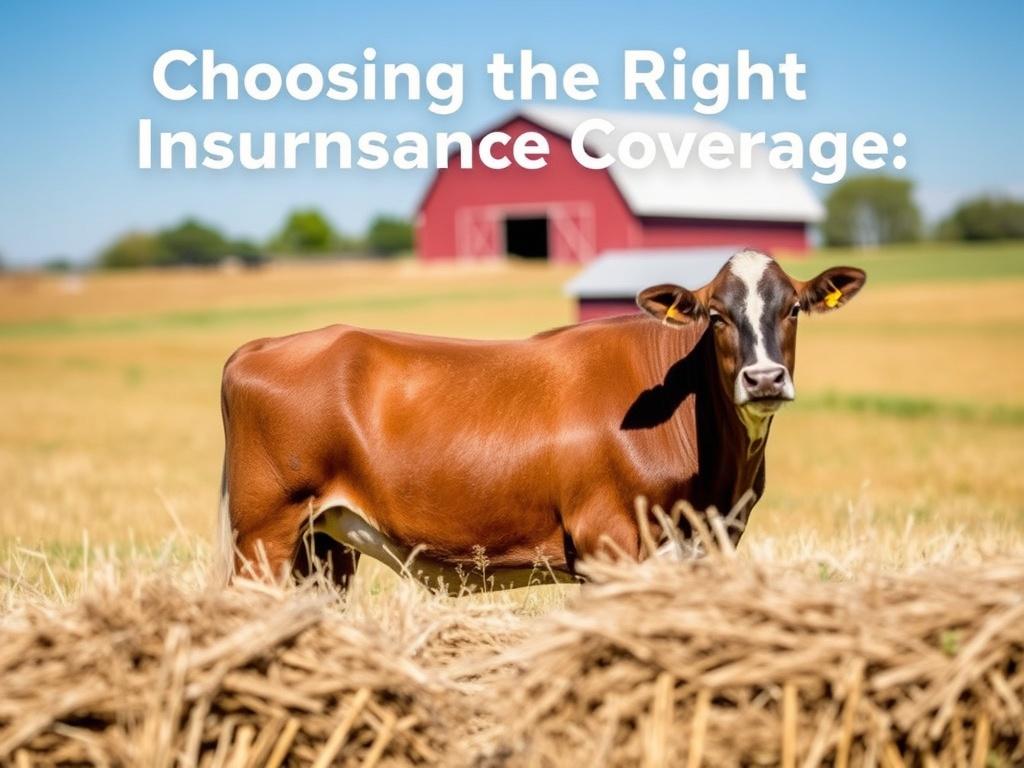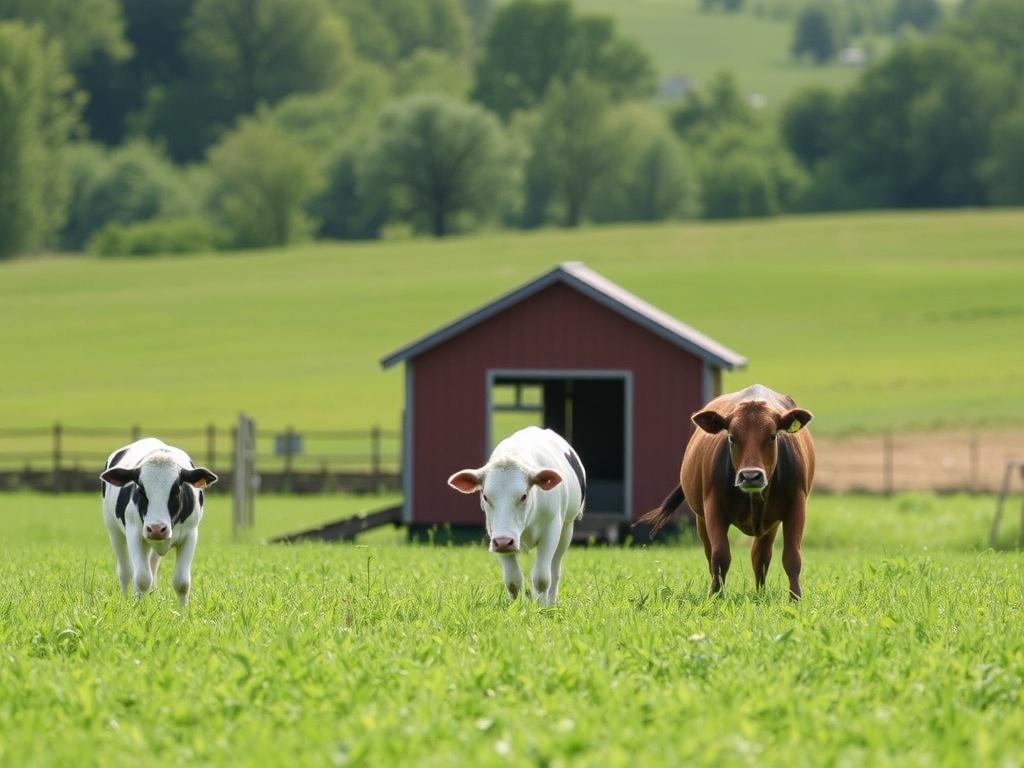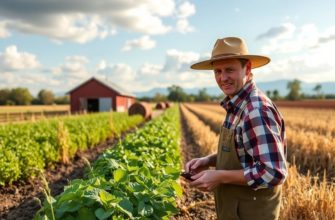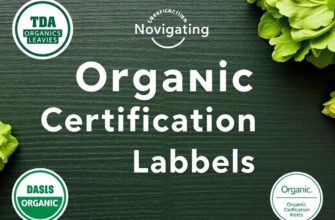Международное название:
Синонимы:
Характеристики:
| Сложность: | |
| Цикл развития: | |
| Световой режим: | |
| Режим полива: | |
| Температура: | |
| Почва: | |
| Ключевая черта: |
Цвет листвы
Цвет бутонов
Размеры цветка
Систематика:
| Домен: | |
| Царство: | |
| Отдел: | |
| Класс: | |
| Порядок: | |
| Семейство: | |
| Род: |
Farming is one of those businesses that asks you to be many things at once: a manager, a mechanic, a scientist, a steward of the land, and too often, a fortune teller. You plan your planting schedule, predict weather, budget for feed, and hope nothing unexpected takes you off course. But some surprises are inevitable. That’s where farm insurance coverage comes in — a financial safety net that can protect the livelihood you’ve built from storms, accidents, disease, liability claims, and everything in between. In this article I’ll walk you through how to choose the right farm insurance coverage in a conversational, practical way. Together we’ll look at the types of policies available, how to assess your risks, how insurers calculate premiums, what common exclusions mean, and how to shop for the best mix of protection and price.
Think of this guide as a road map. We’ll start with the basics, then dig into the details that matter most when making real-world decisions on a real farm. Whether you run a few acres with a handful of animals, a diversified family farm, or a mid-size commercial operation, the same principles apply: inventory what you have, quantify your exposure, compare policies, and choose coverages that match both your risk tolerance and your budget. Let’s get started.
- Why Farm Insurance Matters — More Than Just a Policy
- Start With a Thorough Risk Assessment
- Quantifying Your Exposure
- Prioritize Risks Based on Likelihood and Impact
- Understand the Core Farm Insurance Coverages
- Property Insurance
- Liability Insurance
- Farm Auto and Equipment Coverage
- Inland Marine and Mobile Equipment
- Livestock and Animal Mortality Insurance
- Crop Insurance
- Business Interruption and Income Protection
- Specialized Coverages to Consider
- Agritourism and Direct-to-Consumer Sales
- Equine, Apiary, and Aquaculture Policies
- Environmental and Pollution Liability
- Equipment Breakdown and Cyber Liability
- How Insurers Calculate Premiums — What Affects Your Price
- Deciding Deductibles and Limits
- Replacement Cost vs. Agreed Value
- Common Exclusions and Endorsements — Read the Fine Print
- Shopping for Coverage — Practical Tips
- Start Early and Get Multiple Quotes
- Use an Agent Who Understands Farming
- Bundle When It Makes Sense, But Check Details
- Ask About Discounts and Loss Control Programs
- Review the Claims Process
- Documenting Your Farm for Faster Claims
- Real-World Examples — Learning from Others
- Example 1: The Barn Fire That Could Have Bankrupted the Farm
- Example 2: A Visitor’s Injury at a Farmstand
- Example 3: A Weather-Related Crop Loss
- Managing Risk Beyond Insurance
- Policy Renewal and Annual Reviews
- Making Cost-Effective Choices Without Under-Insuring
- How to Work with an Agent or Broker Effectively
- Checklist: Choosing the Right Farm Insurance Coverage
- Frequently Asked Questions
- Do I need separate policies for my home and farm?
- Is crop insurance mandatory?
- Can I insure my hobby farm the same as a commercial operation?
- How do I insure high-value animals?
- What’s the difference between named peril and all-risk coverage?
- Final Practical Tips
- Conclusion
Why Farm Insurance Matters — More Than Just a Policy
Farm insurance is more than a checkbox on an annual to-do list. It’s the difference between weathering a crisis and watching years of work evaporate. For many farmers, the farm is a home, a workplace, and the source of community identity. A single catastrophe — a barn fire, a liability suit after a visitor slips on icy steps, or a disease outbreak among livestock — can produce losses that ripple for years.
The practical value of farm insurance includes protection for property (buildings, equipment, crops), liability coverage (for visitors and products), and specialized protections (livestock mortality, crop hail, income loss, and business interruption). But insurance also has non-monetary value: reduced stress, the ability to qualify for loans, and a clearer path to recovery. In short, good coverage supports continuity.
Start With a Thorough Risk Assessment
Before you can choose the right farm insurance coverage, you must understand what you’re protecting. That means performing a realistic risk assessment. Walk the farm and inventory everything. Create a list of property, equipment, vehicles, livestock, people who work for you, and the types of operations you run (grain, dairy, poultry, nursery, equine, direct-to-consumer sales, agritourism, etc.). Don’t forget seasonal or stored items such as hay, seed, and fertilizers.
Here are practical steps to conduct a meaningful assessment:
- List all structures and their uses: home, barns, machine sheds, greenhouses, silos, storage buildings.
- Catalog equipment and value: tractors, combines, sprayers, ATVs, trailers, and hand tools.
- Count and value livestock: breeding stock vs. market animals, and note any high-value animals separately.
- Document crop types and acreage: include anticipated yields and market value.
- Note business operations that bring the public onto the property: farm stands, workshops, tours, or U-pick.
- Consider employees and contractors: are you using seasonal labor or volunteers?
- Map environmental risks: floodplain, wildfire history, lightning strikes, and proximity to busy roads.
Once you have a clear inventory, assign estimated replacement or market values to items. This helps decide limits of coverage and whether to choose actual cash value or replacement cost clauses.
Quantifying Your Exposure
To select the right coverages, quantify potential losses under different scenarios. For example: How much would it cost to rebuild your barn? How long could you operate if your main equipment was destroyed? Could you cover payroll if an incident forces closure for a month? Build simple scenario estimates — worst case, moderate, and likely — and use these to guide coverage limits and deductibles.
Prioritize Risks Based on Likelihood and Impact
Not every risk is equally likely or costly. Prioritize based on probability and potential severity. A small slip-and-fall incident might be likely and low cost per event, while a catastrophic barn fire is less likely but could bankrupt the operation. Your farm’s location and the nature of operations will influence these priorities.
Understand the Core Farm Insurance Coverages
Farm insurance is a bundle of coverages combined into policies tailored for agricultural operations. The main building blocks you’ll encounter are property, liability, auto, inland marine, livestock, crop, and business interruption. Let’s break them down in approachable terms.
Property Insurance
Property insurance protects physical assets like barns, silos, greenhouses, machinery sheds, and sometimes the farmhouse itself. Key choices include:
- Replacement Cost vs. Actual Cash Value: Replacement cost pays to rebuild at current prices; actual cash value deducts depreciation.
- Scheduled vs. Blanket Coverage: Scheduled covers listed items at declared values. Blanket covers the total property limit and can be more flexible when values shift between categories.
- Coverage for outbuildings and structures separated from the main property can be limited—read policy definitions carefully.
Liability Insurance
Liability insurance covers legal and medical expenses if someone is injured or property is damaged because of your operations. There are several types:
- General liability: covers visitors, customers, and non-employees for injuries and property damage.
- Product liability: vital if you sell food, livestock, or other products directly to consumers.
- Employer’s liability and workers’ compensation: required in many places when you have hired employees.
- Premises liability: covers incidents that happen on the farm property.
Liability limits vary widely. Think about worst-case medical or legal costs in your region and choose limits accordingly.
Farm Auto and Equipment Coverage
Farm auto insurance covers trucks, pickups, and other vehicles used for farm business. Standard personal auto policies often exclude business use, so a farm auto endorsement or commercial vehicle policy may be necessary. Equipment coverage can extend to implements and machinery. Consider:
- Who will be allowed to operate equipment (employees, family members, or contractors).
- Usage patterns (on-road vs. off-road), as some policies exclude certain uses.
Inland Marine and Mobile Equipment
Inland marine coverage protects property that moves off-premises or is stored in multiple locations — for example, equipment on trailers, irrigation systems, or tools used across fields. It’s commonly misunderstood: despite the name, it covers land-based movement.
Livestock and Animal Mortality Insurance
Livestock insurance covers loss due to theft, accidents, and some diseases. There are options:
- Named perils livestock insurance: covers specific risks listed in the policy.
- All-risk mortality policies: broader but usually more expensive.
- Specialized policies for high-value animals (racehorses, show animals, pedigreed breeding stock).
- Transit and theft coverages for animals moved to shows or markets.
Crop Insurance
Crop insurance is a major line for many farms. There are federal crop insurance programs in many countries and private products. Common types include:
- Yield-based (e.g., multi-peril crop insurance): pays when yields fall below a protected level due to covered causes like drought, flood, or pests.
- Revenue-based: protects against price drops or low revenue from both yield and market price shifts.
- Hail, fire, and named perils: more limited but lower cost for specific risks.
Decisions include selecting coverage percentages, insured acreage, and understanding administrative deadlines for planting and reporting.
Business Interruption and Income Protection
Business interruption or farm income coverage helps replace lost income when operations are interrupted due to a covered loss. This can be crucial if a disease outbreak or a major fire shuts down production for weeks or months. Policies vary in how they measure losses — some look at prior-year income, others use more detailed accounting measures.
Specialized Coverages to Consider
Farms today often do more than grow crops. Diversified operations bring new exposures that standard policies may not cover.
Agritourism and Direct-to-Consumer Sales
If you run pumpkin patches, corn mazes, farm-to-table dinners, or a farm stand, you face increased liability from visitors. You’ll likely need supplementary liability, event insurance, or an agritourism endorsement to cover these activities and the unique exposures they present.
Equine, Apiary, and Aquaculture Policies
Specialty operations require specialty policies. Horses may need mortality, loss of use, and liability for boarding or breeding operations. Beekeepers face unique perils (pesticide drift, disease) that standard farm policies often don’t address. Aquaculture has water-quality risks and specialized property needs.
Environmental and Pollution Liability
Farms that store large quantities of fuel, chemicals, or manure can have pollution exposures. Environmental liability can cover cleanup costs, bodily injury from contamination events, and regulatory fines in some cases. These policies are increasingly important as regulations tighten.
Equipment Breakdown and Cyber Liability
Modern farms rely on computerized management systems for irrigation, feeding, and monitoring. Equipment breakdown insurance can cover costly repairs or replacements of high-tech systems. Cyber liability is relevant if you collect customer data online, use cloud-based management for sales, or depend on third-party apps that could expose you to data breaches.
How Insurers Calculate Premiums — What Affects Your Price
Understanding how premiums are calculated helps you make smart choices about deductibles, limits, and risk management. Insurers weigh likelihood of a claim and potential severity. Key factors include:
- Location and geography: flood zones, wildfire-prone areas, and climate patterns matter.
- Claims history: past claims can increase premiums or lead to exclusions.
- Type and scale of operations: larger, more complex farms carry higher exposure.
- Safety and mitigation measures: sprinklers, lightning rods, theft deterrents, and good record-keeping can lower rates.
- Construction type: wood-frame barns cost more to insure than steel or concrete structures.
- Livestock types and counts: higher numbers or high-value animals increase liability.
- Coverage limits and deductibles: higher limits and lower deductibles increase premiums.
A useful analogy: premiums are like the price of peace of mind — but you can lower that price by reducing the risk through prevention and smart choices.
Deciding Deductibles and Limits
Deductibles are the portion of a claim you agree to pay before insurance kicks in. Higher deductibles lower your premium but increase your out-of-pocket if a loss occurs. Limits determine the maximum the insurer will pay. When selecting these, strike a balance:
- Choose a deductible you can comfortably pay after a realistic worst-case event.
- Avoid under-insuring with low limits to save a few dollars; catastrophic losses can overwhelm a small limit.
- Consider separate limits where appropriate (e.g., a higher limit for dwelling, separate limits for equipment and livestock).
Replacement Cost vs. Agreed Value
Replacement cost policies reimburse the cost to repair or replace at current prices. Agreed value (often used for specialty equipment or high-value animals) sets a pre-agreed amount that simplifies claims. Agreed value can be helpful for items with rapidly fluctuating market values.
Common Exclusions and Endorsements — Read the Fine Print
No policy covers everything. Common exclusions include routine wear and tear, insect infestation, disease not covered under a livestock policy, and certain kinds of pollution or earthquake damage unless endorsements are purchased. Pay attention to:
- Named perils vs. all-risk policies: named perils only cover listed causes; all-risk covers everything unless excluded.
- Sub-limits for specific property types: expensive farm equipment or high-value livestock may have limited coverage unless scheduled separately.
- Work-related exclusions: personal policies may exclude business activities on-premises.
Endorsements (also called riders) add or modify coverage. Common endorsements for farms include hired and non-owned auto coverage, extended replacement cost for buildings, agritourism liability, and ordinance or law coverage for rebuilding to current codes.
Shopping for Coverage — Practical Tips
Shopping for farm insurance can feel overwhelming, but some practical steps make it manageable.
Start Early and Get Multiple Quotes
Don’t wait until renewal time to explore options. Get multiple quotes — from independent agents, brokers familiar with agriculture, and specialized farm insurers. Comparing three or more options gives perspective on market rates and coverages.
Use an Agent Who Understands Farming
A specialist agent who knows agricultural operations can suggest the right endorsements and highlight gaps. They can also help document values, which speeds claims processing should disaster strike.
Bundle When It Makes Sense, But Check Details
Many insurers offer farm package policies that bundle property, liability, and other coverages. Bundles can be cost-effective, but check policy details — sometimes a cheaper bundle lacks specific coverages you need.
Ask About Discounts and Loss Control Programs
Insurers often offer discounts for safety measures: fire suppression systems, alarm systems, training for employees, and good record-keeping. Some provide loss control consultations that recommend changes to lower premiums.
Review the Claims Process
Fast and fair claims handling matters more than a small premium difference. Ask prospective insurers about claims response times, adjuster availability, and how they handle large or complex agricultural losses.
Documenting Your Farm for Faster Claims
The better documented you are, the easier the adjuster’s job and the smoother the claim process. Create a claims-ready file:
- Photograph or video every structure, machine, and valuable item. Date-stamp or keep digital metadata.
- Keep receipts, invoices, titles, and maintenance records for equipment and livestock.
- Maintain recent farm financial statements and tax returns for income-related claims.
- Record serial numbers for major equipment and VINs for vehicles.
- Store this documentation offsite or in the cloud so it survives a physical loss to your property.
Real-World Examples — Learning from Others

Stories help us visualize risk. Here are a few anonymized, realistic scenarios that show why certain coverages matter.
Example 1: The Barn Fire That Could Have Bankrupted the Farm
A mid-sized dairy operation experienced an electrical fire that destroyed the milking parlor and adjacent equipment. Thankfully, they had replacement-cost coverage for the structures and equipment. The claim covered rebuilding and buying new milking machines. They also had business interruption coverage that compensated lost milk income during shutdown, allowing them to cover payroll and stay afloat until production resumed.
Lesson: Replacement-cost property coverage plus interruption insurance can preserve continuity after a catastrophe.
Example 2: A Visitor’s Injury at a Farmstand
A customer visiting a farmstand slipped on a wet step and sustained a broken arm. The farm had general liability coverage that paid the medical bills and settled the small negligence claim. Without that coverage, the farm would have faced large out-of-pocket medical and potential legal costs.
Lesson: Liability coverage is essential if the public visits your property.
Example 3: A Weather-Related Crop Loss
After a season of late frost and heavy rain, a vegetable grower experienced a dramatic yield loss. Their revenue-based crop insurance triggered a payout, helping the grower recoup some lost income and cover next season’s inputs.
Lesson: Crop insurance tailored to your crop type and revenue exposure is a key risk management tool.
Managing Risk Beyond Insurance
Insurance is not the only tool. Good risk management reduces claims and makes insurance more affordable. Practical strategies include:
- Routine maintenance for equipment to prevent breakdowns and accidents.
- Fire prevention plans: lightning protection, clear brush, and safe storage of fuels and chemicals.
- Employee training for safe operation of machinery and safe handling of livestock.
- Biosecurity measures and vaccination protocols to limit livestock disease risk.
- Drainage and erosion control to reduce flood damage to fields and structures.
Insurers view farms that actively manage risks as better clients, and many will offer premium reductions for documented safety programs.
Policy Renewal and Annual Reviews

Your farm changes over time. Buildings are added, equipment is upgraded, new business lines appear, and markets shift. Treat your farm insurance as a living document:
- Review policies annually with your agent and update values and operations.
- Adjust coverage when you build or acquire valuable assets.
- Notify your insurer about new activities that bring the public onto the farm or introduce new exposures.
- Reassess deductibles and limits if your financial situation changes.
A single annual review can uncover gaps, save money, and align coverage with your current realities.
Making Cost-Effective Choices Without Under-Insuring
Balancing cost and protection is an art. Don’t chase the cheapest premium; instead pursue value. Tactics to manage costs include:
- Increasing deductibles where you have cash flow to support occasional out-of-pocket payments.
- Bundling coverages when it doesn’t sacrifice needed endorsements.
- Implementing loss control measures to qualify for discounts.
- Regularly shopping the market and renewing only when you’re satisfied with coverage and service.
If a quote seems unusually cheap, ask why. There may be coverage gaps, higher deductibles, or sub-limits that could leave you exposed.
How to Work with an Agent or Broker Effectively
An experienced agent is your guide. To get the most from that relationship:
- Bring your inventory and recent financials to meetings.
- Explain your operations in plain terms: day-to-day workflows often highlight exposures you may not have considered.
- Ask direct questions about exclusions, endorsements, and claims examples.
- Request written summaries showing what’s covered, coverage limits, and any endorsements.
Choose an agent who listens and asks detailed questions. The right agent can become a trusted advisor.
Checklist: Choosing the Right Farm Insurance Coverage
Use this checklist when evaluating your needs and comparing options:
| Step | Action | Why It Matters |
|---|---|---|
| Inventory | List structures, equipment, livestock, crops, and business activities | Determines coverage needs and policy limits |
| Assess Risks | Map likely perils and potential losses | Prioritizes coverages like fire, flood, liability |
| Document Values | Record replacement costs and receipts | Simplifies claims and avoids underinsurance |
| Compare Quotes | Get multiple bids from knowledgeable agents | Find best mix of price, coverage, and service |
| Review Exclusions | Read the policy fine print and endorsements | Avoid surprises at claim time |
| Implement Safety | Adopt loss prevention measures | Can lower premiums and reduce claims |
| Annual Review | Update policies each year to reflect changes | Keeps coverage aligned with operations |
Frequently Asked Questions
Do I need separate policies for my home and farm?
Not always. Some farm package policies include dwelling coverage, but personal homeowners’ policies may exclude business exposures. Confirm whether your farmhouse is covered for farm-related activities and consider a farm dwelling endorsement if needed.
Is crop insurance mandatory?
Crop insurance is not universally mandatory, but it’s often required by lenders when you take out farm operating loans or buy certain programs. Even when optional, it’s an essential risk management tool for many producers.
Can I insure my hobby farm the same as a commercial operation?
Hobby farms typically have different exposures and lower revenue, and personal policies may suffice if no business activities are conducted. Once you sell products, host public events, or hire employees, you likely need commercial or farm policies.
How do I insure high-value animals?
High-value animals often require agreed-value or scheduled coverage with specific mortality and liability provisions. Be prepared to provide valuation documentation and often veterinary or performance histories.
What’s the difference between named peril and all-risk coverage?
Named peril policies only cover losses from listed causes (e.g., fire, theft, hail). All-risk policies cover any cause of loss except those specifically excluded. All-risk policies usually cost more but provide broader protection.
Final Practical Tips
– Keep good records. Documentation is your strongest ally in claims.
– Don’t assume your homeowner’s policy covers farm exposures — check explicitly.
– Re-evaluate annually and after any major change on the farm.
– Think like a risk manager: prevention plus insurance equals resilience.
– Invest in relationships with knowledgeable agents and local agricultural networks — their experience can be priceless.
Conclusion

Choosing the right farm insurance coverage is a careful combination of inventorying what you own, understanding the risks you face, prioritizing the coverages that matter, and working with an agent who understands agriculture; with a clear plan, realistic valuation, and routine reviews you can protect your property, income, and the people who depend on the farm, while keeping premiums manageable through sensible deductibles and risk-reduction measures.
Оценивайте статью, делитесь материалом с друзьями в социальных сетях, а также высказывайте свое мнение в обсуждении ниже! ![]()







